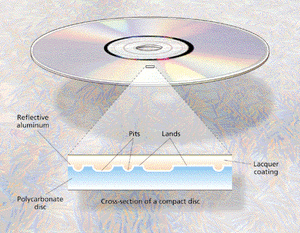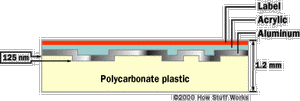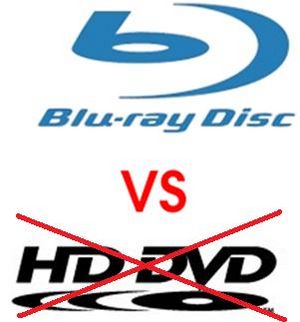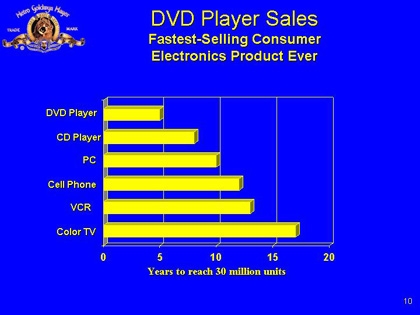Group 2:
Contents
Group Information
Group Name
Team Awesome and Completely HELPLESS
Group Members
Colby Woit, Jesse Alves, Nan Xu
The Evolution Of Optical Storage
Introduction And Background Information
Optical Storage has grown in development over the past decade in the form of DVDs and CDs. These discs act as storage devices for data such as music, pictures and video. After years of growth in the industry, HD DVD and Blu-ray discs have formed. Blu-ray Discs are the future in optical disc formats developed together by the “Blu-ray Disc Association (BDA)”, which is a collection of the world's top consumer manufacturers including: Apple, Dell, HP, JVC, LG, Panasonic, Sharp, Sony and more. This format was developed for high-definition video, which provides over five times the storage space of regular DVDs and can contain data up to 25GB on a single-layer disc or up to 50GB on a dual-layer disc. This will offer future consumers an exceptional HD experience. The reasoning behind a larger storage capacity is because of the use of a blue-violet laser, whereas CDs beforehand have used a red laser. The blue-violet laser has a shorter wavelength of 405nm rather than the 650nm of a red laser, giving it a more focused point of precision and leaving additional room for memory.
The Technology
How it works
Optical Storage discs work using multiple layers. These layers are a polycarbonate plastic layer, an aluminum layer, an Acrylic layer, and a label. Pits and lands are made in the aluminum and acrylic layers to produce a binary code. (A series of off and on combinations which store data)
A CD is capable of holding about 800mb of data because of it’s laser size. This means that the laser can make about 800000000 pits or lands on a single disc.
In more recent technology like Blu-Ray, the laser operates at a higher frequency. This allows it to write and read significantly smaller pits and lands, therefore fitting a lot more data on the same surface area as a CD
History
The Compact Disc
Released - October 1st 1982
Capacity – 800MB
• Developed by Sony and Philips Consumer Electronics in 1979
• Originally meant to store digital audio
• A spin off on the unsuccessful Laser Disc released by Sony
• Remains the primary physical median for commercial audio
Technology was later expanded to hold: data (CD-ROM), video (VCD), and to include the CD-R which made it possible for people to make CD domestically.
2004 – About 30 billion CD’s sold worldwide 2007 – Over 200 billion CD’s sold worldwide
First CD to be actually released was Billy Joel’s 52nd Street alongside Sony’s CD player CDP-101
Digital Versatile Disc
Released – 1995
Capacity – 4.7GB
• Developed by TWG which included Microsoft, IBM, Apple, Sun, Dell and a few others in 1993
• IBM was responsible for TWG forming in order to avoid the eminent video format war between the MMCD and the SD disc
High Definition Digital Versatile Disc
Released – March 2006
Capacity – 15GB(single layer) 30GB(double layer)
• Developed by Toshiba in 2000
• Uses a new higher frequency blue laser
By January 2008, close to one million HD DVD players had been sold
• Technology Abandoned February 2008
Blu-Ray
Released – June 2006
Capacity – 50GB
• Developed by the Blu-Ray Association in 2000
• Originally called DVR-blue
• Uses a higher frequency blue laser
• Blu-Ray Association included Sony and Philips Consumer Electronics as well as Apple, Dell, HP, JVC, LG, Panasonic, Samsung, Sharp
• January 4, 2008 is the date when Warner Bros announced that they will go exclusive with Blu-ray, leading to a chain reaction by stores (Circuit City, Wal-mart, Best buy)
Specifications
Optical Storage Technology Comparison
| | Type | | Year Released | | Laser Width(nm) | | Standard Capacity | | Max. Capacity | | Double Layer | | Double Side | | |
|---|---|---|---|---|---|---|---|
| HD Capable | | |||||||
| CD-ROM | 1982 | 780 | 740mb | 800mb | no | no | no |
| DVD-ROM | 1995 | 650 | 4.7gb | 17.08gb | yes | yes | no |
| HD-DVD | 2006 | 405 | 15gb | 60gb | yes | yes | yes |
| Blu-ray | 2006 | 405 | 25gb | 50gb | yes | no | yes |
Difference in Quality
As the image on the right shows, there is a noticeable difference in quality between DVD-ROM and Blu-ray formats. This is because Blu-ray allows for more storage capacity, and this in turn allows more detail and data to be contained. This is due to the ability of using a blue-violet laser with a shorter wave length, rather then the traditional red laser. Having more data will allow for more precise images to be shown than regular DVD-ROM.
Sales Comparison
In the sales comparison image, it is possible to see how popular optical storage is. The time to sell the necessary amount of 30 million units continues to be faster as the technology develops. This can be used as a strong indication of how Blu-Ray will sell in today's market.
Conclusion
As optical media progess and develops, it is able to store more and more information on a disc. Although CD-ROMs are still common, there is a growing trend for DVD media becoming the standard. Blu-ray has also become the new format for High Definition, beating out the competing HD-DVD.
References
Xu, Nan:
http://electronics.howstuffworks.com/cd5.htm http://www.osta.org/technology/cdqa15.htm http://en.kioskea.net/contents/pc/cdrom.php3 http://www.blu-ray.com/faq/#bluray http://www.sonic.net/~ideas/art_mma3.html
Alves, Jesse:
http://en.wikipedia.org/wiki/CD http://en.wikipedia.org/wiki/DVD http://en.wikipedia.org/wiki/HDDVD http://en.wikipedia.org/wiki/Blu-Ray
Woit, Colby:
http://www.blu-ray.com/info/ http://electronics.howstuffworks.com/blu-ray.htm http://gadgets.fosfor.se/hd-dvd-vs-dvd/ http://images.google.ca/images?gbv=2&hl=en&q=dvd+sales&btnG=Search+Images http://electronics.howstuffworks.com/dvd1.htm http://en.wikipedia.org/wiki/Blu-ray_Disc http://gobluray.com/





